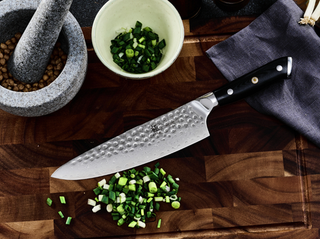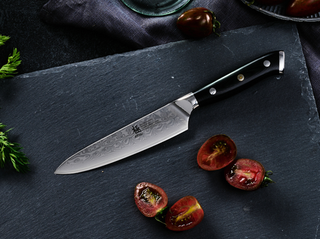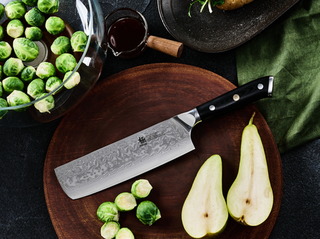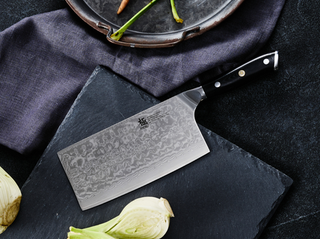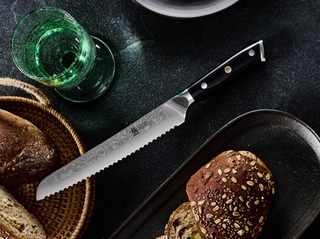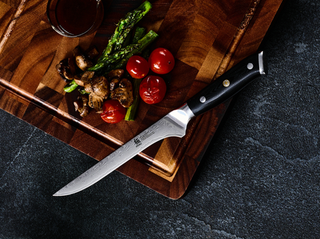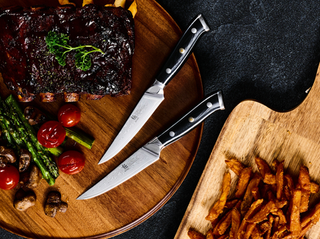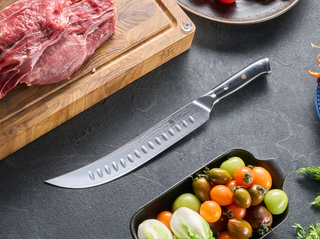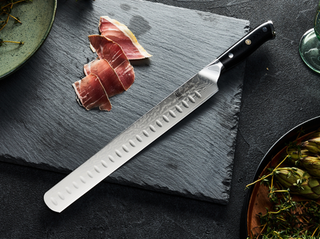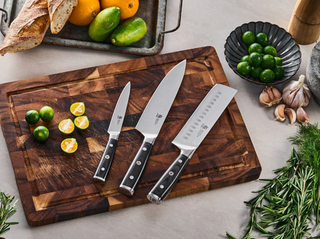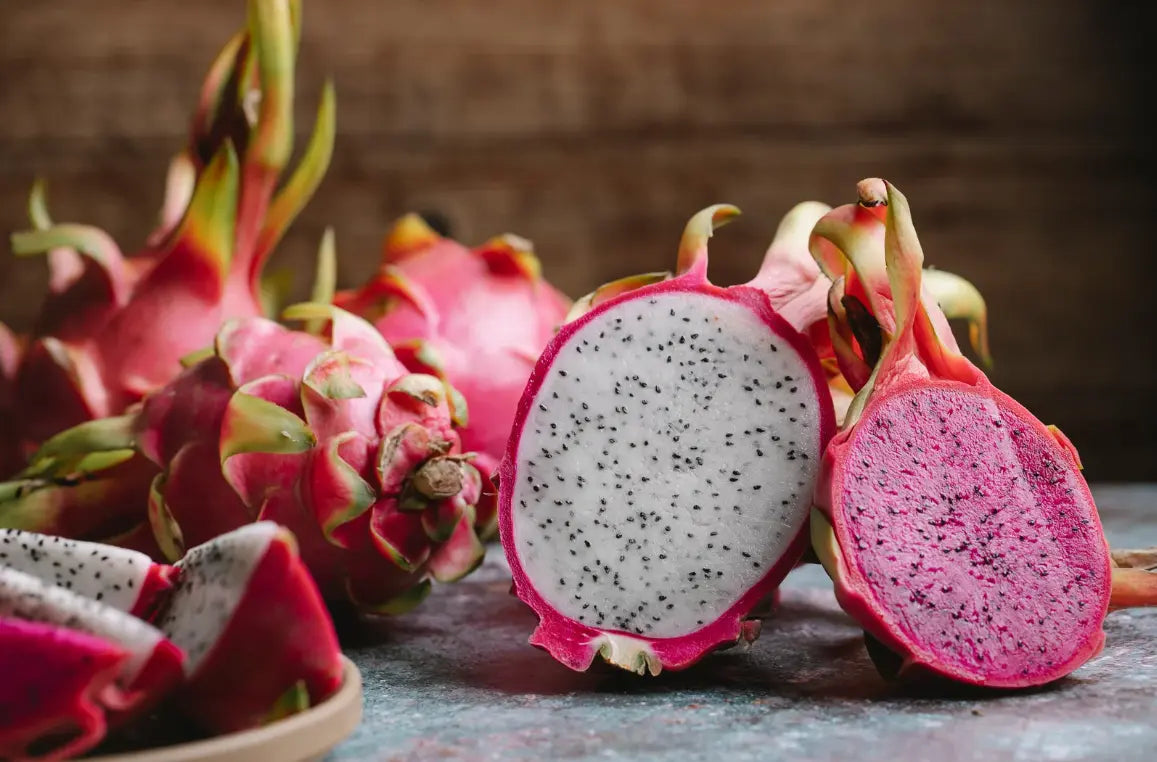Are you intrigued by the vibrant colors and unique appearance of dragon fruit? Known also as “pitaya”, this exotic fruit can not only add a splash of aesthetic appeal to your fruit basket but also promises a culinary adventure worth exploring. Mastering how to cut a dragon fruit is important. This guide will help you unlock the secrets of how to cut a dragon fruit, emphasizing the use of a paring knife and a chef’s knife during the process of handling a dragon fruit like a pro.
What is Dragon Fruit?
Dragon fruit is a striking tropical fruit known for its health benefits and delicious flavor. Originating from the cactus family, it often appears with vibrant colors in an oval or pear shape. Dragon fruit can vary in type: yellow dragon fruit (pitaya amarilla) has yellow skin with white flesh, red dragon fruit (pitaya roja) is pink with red flesh, and pink dragon fruit (pitaya rosa) is pink with white flesh, each offering its unique taste.

What are the Benefits of Dragon Fruit?
Dragon fruit is more than just its good looks; it's packed with many health benefits. This low-calorie fruit is rich in antioxidants, vitamins C, and fiber, contributing to a stronger immune system, better digestive health, and a boost in metabolic function. It’s also a source of monounsaturated fats, helping to keep the heart in good shape. Including dragon fruit in your diet means you are not just indulging in a tasty snack but also contributing to your overall health and well-being.
How to Tell if a Dragon Fruit is Ripe?
Choosing a ripe dragon fruit is essential for enjoying its optimal flavor and texture. Ripe dragon fruit will have bright, even-colored skin without too many blemishes or brown spots, although a few are normal. The fruit should feel slightly soft when pressed, like a ripe avocado. Aromatic, sweet, and tropical hints in its smell can also be indicators of ripeness. Avoid those with dry, brown stems or too many dark spots, as these often signal an overripe or aged fruit.

How to Cut a Dragon Fruit: A Step-by-Step Guide
Having selected the perfect dragon fruit, you are now ready to get into its juicy sweetness. As you know, tools are always essential for any fruit enthusiast, here is how you can cut a dragon fruit efficiently using a paring knife and a chef knife.
Step 1: Cut in Half
Place a dragon fruit on a cutting board. Using a sharp chef knife, cut the dragon fruit in half lengthwise from stem to base. This technique ensures a clean cut, allowing easier handling in the next steps.
Step 2: Remove the Skin (2 Ways)
- Method 1: Scoop it Out With the halves face-up, use a large spoon to gently scoop out the flesh, much like you would with an avocado. This method is perfect for those who want to use the hollowed-out skin as a decorative bowl for serving.
- Method 2: Peel the Skin with a Paring Knife For a closer cut, gently run a paring knife between the skin and the flesh to separate them. Start from one end and peel away the skin. A paring knife can help minimize waste and preserve more of the edible fruit than other knives.
Step 3: Cut into Smaller Pieces with a Chef Knife (2 Ways)
- Method 1-Slices: Place the dragon fruit flat on your cutting board. With your chef knife, carefully slice it to your desired thickness. The sharp and broad blade of the chef knife allows for clean and straight cuts, making these slices ideal for elegant platters or as eye-catching garnishes for drinks.
- Method 2-Cubes: To make cubes, first slice the flesh into wide strips, then stack them and slice again in the opposite direction with your chef knife. Cubes are great for fruit salads or as toppings for cereals and desserts.
Top Recommendations of Knives to Cut Dragon Fruit
As you learn the roles of the paring knife and the chef knife in cutting dragon fruit, here are top recommendations of knives that are ideal for handling dragon fruit for you:
1. 4.5" PARING KNIFE| DAIMYO SERIES
This 4.5-inch paring knife of the Daimyo series merges traditional aesthetics with modern technology. The blade, made from vacuum-heated Japanese stainless steel, ensures outstanding durability and a scalpel-like sharpness at 13-15 degrees edge angle. The rosewood handle not only adds a touch of elegance but also provides a comfortable grip, making it perfect for peeling dragon fruit.
2. 8" GYUTO CHEF KNIVES VG10 DAMASCUS STEEL | SHOGUN SERIES
Forged from durable Damascus steel, this chef knife of the Shogun series is perfect for more substantial tasks, such as slicing through larger volumes of dragon fruit with ease. The blade's hardness of 58-60 and the ergonomic G-10 fiberglass handle also ensure that every cut is precise and effortless, making it an excellent tool for professionals and home kitchens alike.
3. 8" GYUTO CHEF KNIVES | DAIMYO SERIES
Combining elegance and functionality, the 8-inch chef knife of the Daimyo Series is crafted from Japanese stainless steel. Its sharp edge can glide through dragon fruit without bruising or tearing the delicate flesh. The rosewood handle also provides balance and comfort, reducing fatigue during repetitive cutting tasks.
Conclusion
Learning how to cut a dragon fruit with a paring knife and a chef knife can not only unlock the full potential of this exotic fruit but also enhance your culinary skills. Whether you are dicing the dragon fruit for a salad, blending it into a smoothie, or simply enjoying it fresh, dragon fruit is a versatile addition to your diet that brings a splash of color and a wealth of health benefits.
